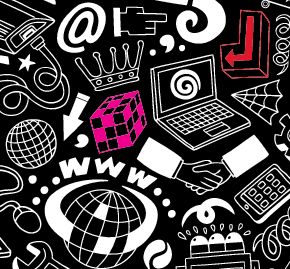Published on the 16/09/2014 | Written by Frost & Sullivan

Massive technology-led disruption across all industries globally, driven by the rapid proliferation of connected devices and services, is moving everyone and everything towards a state of ‘connected everything’…
In the not too distant future, the average ‘digital native’ – a person born or brought up during the age of digital technology – will have at least 10 personal connected devices at home and access to over 80 billion devices. It is expected that by the time we are into the 2020s, tens of millions of people will be connected by trillions of things and applications as a result of connected industries. ‘Connected living’ is defined as a world in which consumers use many different devices to experience compelling new services that integrate video, voice, and data services to provide access and ubiquitous connectivity anytime and anywhere. In the future, smart and connected everyday objects and appliances will be able to monitor the environment, report statuses, receive instructions, and take action based on the information received from PCs, smartphones, and tablets. This evolution towards connected living began in the 1970s, which had specialised computing activities driven by proprietary equipment and mainframes. In the ’90s the advent of PCs and the internet led to increased productivity, and since 2010 we have had bursts of disruption and innovation through cloud computing and mobile capabilities. Mark Dougan, A/NZ managing director for Frost & Sullivan says: “Mobility and cloud computing have brought about significant changes in the ICT industry. Cloud computing, big data, mobility and low cost sensors are driving the internet of things and connected industries. The internet of things is forcing transformation and innovation across connectivity and convergence of people and industries, giving rise to the connected home, connected workplace and connected city. The consumerisation of the information and communication technologies (ICT) environment is forcing companies to converge and offer ICT-blended solutions. This is creating a whole new market of connected living solutions and services.” To understand the development and growth of the ‘connected living’ market Frost and Sullivan looked at the micro market level for the new products and services that are being taken up by consumers in the context of where we spend most of our time – at home, at work and out and about in the ‘city’. Frost & Sullivan forecasts the total connected living market will reach $731.70 billion by 2020 as the importance of the internet and digital solutions grows in the overall economy. The ‘connected city’ segment, which is comprised of e-governance, e-citizens, smart transportation cards, e-learning, mobile banking and digital classrooms, remote education services as well as digital libraries, will contribute the largest percentage at 54 percent, equating to an estimated market potential of $392.94 billion, with smart governance and education services making up 50 percent of growth in this segment. Dougan says: “Connected cities will be driven by connected consumer services for mobility, governance, education, and banking and financial services. Data is the essential game changer and e-services such as e-payments, e-exchange, e-sharing, etc, will empower citizens with real-time access to personal data and related services. Smart governance and education services will transform access to information and learning. More than 60 percent of citizens of smart cities will have full access to e-Services in the next 10 years.” The ‘connected work’ segment comprises 31 percent of the connected living market, contributing $228.44 billion. Connected work encompasses mobility (mobile email, enterprise mobile apps, people location, bring your own device), communication (unified messaging, remote desktop access) and networking (web-based project collaboration tools, cloud-based file sharing services). Connected work solutions (communication platforms, enterprise mobility applications, social media tools) will offer alternate working styles through fully integrated, software-focused architectures. More mobility solutions will eliminate the need for physical space through technologies such as augmented reality and virtual holograms. Instant language translation, virtual reality interaction and shared platforms will truly enable decentralised operations. “Cloud computing, telepresence and simultaneous speech translation will flatten the structure of global companies” “Connected workplace technologies such as cloud computing, telepresence and simultaneous speech translation will flatten the structure of global companies and enable workers to connect with each other and share information in real time any place any time. Already, IBM’s SmartCloud is a virtual business with key processes taking place in the cloud. The levelling of the global playing field for talent will widen the traditional growths and now these new connections will drive significant change. Productivity will rise as organisations become more global and collaborative, adopting a ‘zero’ approach to management, hierarchy, leave and working hours,” states Dougan. ‘Connected home’ accounts for the remaining 15 percent at $111 billion and incorporates home automation; smart meters and smart thermostats, intelligent lighting, remote monitoring and control as well as home health i.e., remote diagnostics and wearable health devices. Connected homes will be controlled through smartphones or wearable technology and monitored through a web of sensors, devices and intelligent infrastructure such as smart lighting, virtual touchscreen windows, energy management systems and remote home health services. Power, heating and light will be automated and supplied based on movement and need. Security systems will be controlled through highly intelligent technologies such as voice, face or fingerprint recognition. Frost & Sullivan predicts that by 2025, the rise of connected living will see 3.7 billion smartphones, 700 million tablets, 520 million wearable health-related devices and 410 million smart appliances in the connected person world. The connected worker world will see 90 million IP telephones, 400 million laptops and over 60 million unified communication platforms. “Frost & Sullivan expects that nearly 80 percent of US enterprises will adopt BYOD, 30 percent of populations will access office networks remotely, and 90 percent of organisations will offer mobility to workers,” remarks Dougan. Meanwhile, the connected citizen will have access to 15 million interactive kiosks enabled by 25 million cloud servers servicing around 1 billion smart government and ID cards. Around 500 million smart transportation cards and 50 million contactless payment cards will be issued and an estimated 35 billion will subscribe to location-based services (LBS) devices by 2020. Dougan elaborates: “The value chain of smart solutions to service all the components of connected living is extremely fragmented with no clear ‘one stop shop’ solution provider providing end-to-end solutions. There are many players, ranging from module/component providers to device vendors to network and platform providers to system integrators. Within these groups are big name players such as Sendum, Gemalto, Apple, Samsung, Telefonica, AT & T, Cisco, SAP, Oracle, IBM and Accenture. Early entrants are exploring ways to monetise opportunities in connected living. First movers in the market are taking one of three approaches: a single purpose solution, a partnership alliance or a broad platform-based offer. Partnership alliances are being formed between different providers.” A key factor in the development of the connected living market is the ability to combine hardware and software so that new products and services can be offered. The current and future connected living market could be exploited by companies in two ways: by creating new opportunity or by capturing market share from others. A key dynamic is the wide opportunity this market represents to nonconventional companies. “Data is the essential game changer and e-services…will empower citizens.” “While the ecosystem of players is complex, there is no denying that collectively, the market potential is huge and presents immense opportunities. Manufacturers will drive value from smart factories, retailers will derive value from digital retailing and advertising, utilities will derive value from smart grids. This is truly a market where being successful means often transformative improvement and legacy means almost nothing; the number of new market entrants is expected to be significant,” finishes Dougan. Download the PDF What will ‘connected living’ look like? (And the tech to support them…) Adapt your collections strategy and come out on top… A guide for manufacturing and distribution companies in Australia and New Zealand… Looking at implementing new software or upgrading your current software?… Understand common deployment options and know which questions to ask…
FURTHER READING

Guide to successful online events

eBook: Seven tips for effectively managing your accounts receivable process in challenging times

How to know if your ERP solution is compatible with your growth plans

Ten critical questions small manufacturers should ask before buying a cloud-based ERP solution

Whitepaper: How your business can shine through the cloud



























